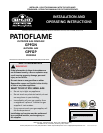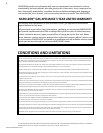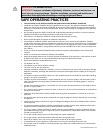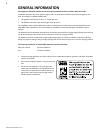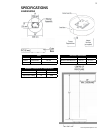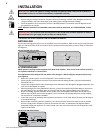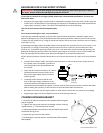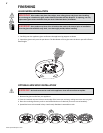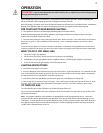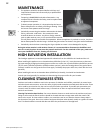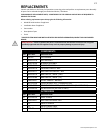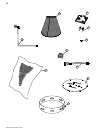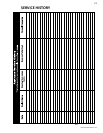Special offers from our partners!

Find Replacement BBQ Parts for 20,308 Models. Repair your BBQ today.

10
www.napoleonreplaces.com
MAINTENANCE
• The appliance should be inspected before inial use and
inspected and cleaned at least annually by a qualied eld
service person.
• Tampering is DANGEROUS and voids all warranes. Any
component that is found to be faulty, must be replaced with
an approved component.
• To obtain proper operaon, it is imperave that the burner
ame characteriscs are steady, not liing or oang. Check
the burner ame paerns with the image.
• Periodically remove the glass embers and examine the burn
er.
If dirty, clean with a so brush. Also examine the area
around the burner air shuer. Any dirt or foreign material,
such as spider webs or nests, in this area should be removed.
This will ensure long life and trouble free operaon. When the appliance is put back in service, check the
burner ame paerns with the image. Reinstall the glass embers as shown in the glass media installaon.
• Periodically check the hose connecng the LP gas cylinder to ensure it is not damaged in any way.
During the winter months in cold weather climates, it is recommended to disconnect the Paoame and
store it in a cool dry place. Do not store the propane tank inside. For the remainder of the year, protect and
cover your Paoame from rain, freezing rain and snow.
HIGH ELEVATION INSTALLATION
This listed gas appliance is tested and approved for elevaons from 0 to 4500 feet in Canada and the U.S.
When installing this appliance at an elevaon above 4500 feet (in the U.S.), it may be necessary to decrease
the input rang by changing the exisng burner orice to a smaller size. Input should be reduced four percent
(4%) for each 1,000 feet beyond the 4,500 feet above sea level, unless the heang value of the gas has been
reduced, in which case this general rule will not apply. To idenfy the proper orice size, check with the local
gas ulity.
When installing this unit at an elevaon above 4,500 feet (in Canada), check with local authories.
Consult your local gas ulity for assistance in determining the proper orice for your locaon.
CLEANING STAINLESS STEEL
Stainless steel tends to oxidize or stain in the presence of chlorides and suldes, parcularly in coastal areas
and other harsh environments, such as the warm, highly humid atmosphere around pools and hot tubs. These
stains could be perceived as rust, but can be easily removed or prevented. To provide stain prevenon and
removal, wash all stainless steel surfaces every 3-4 weeks or as oen as required with fresh water and/or
stain
less steel cleaner.
Cleaning The Stainless Steel Surface: Do not use abrasive cleaners or steel wool on the stainless steel parts.
Doing so will scratch the nish. Surfaces should be cleaned with warm soapy water while the metal is sll
warm to the touch. To clean stainless surfaces, use a stainless steel or non-abrasive cleaner. Always wipe in
the direcon of the grain. Over me, stainless steel parts discolour when heated, usually to a golden or brown
hue. This discolouraon is normal and does not aect the performance of the appliance.



